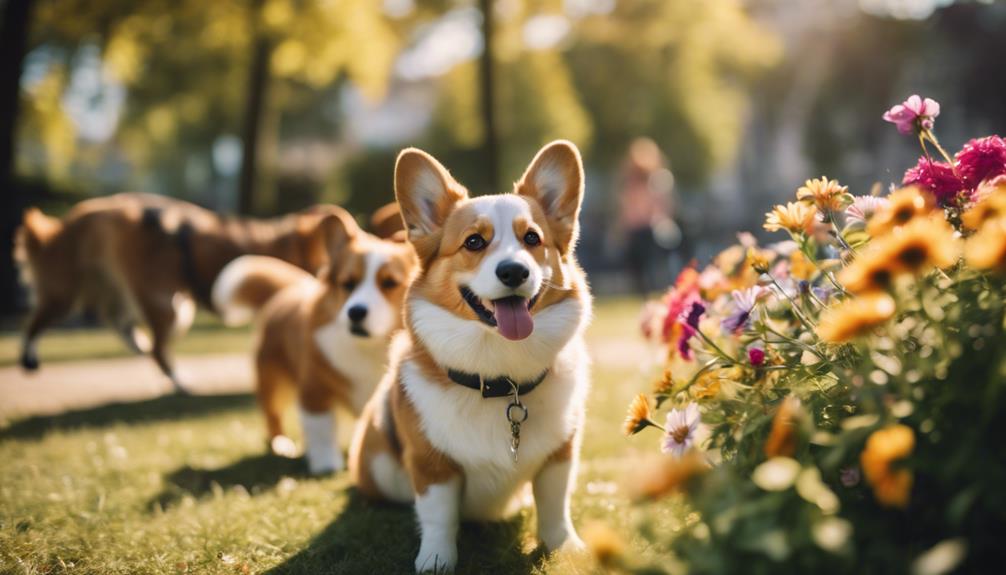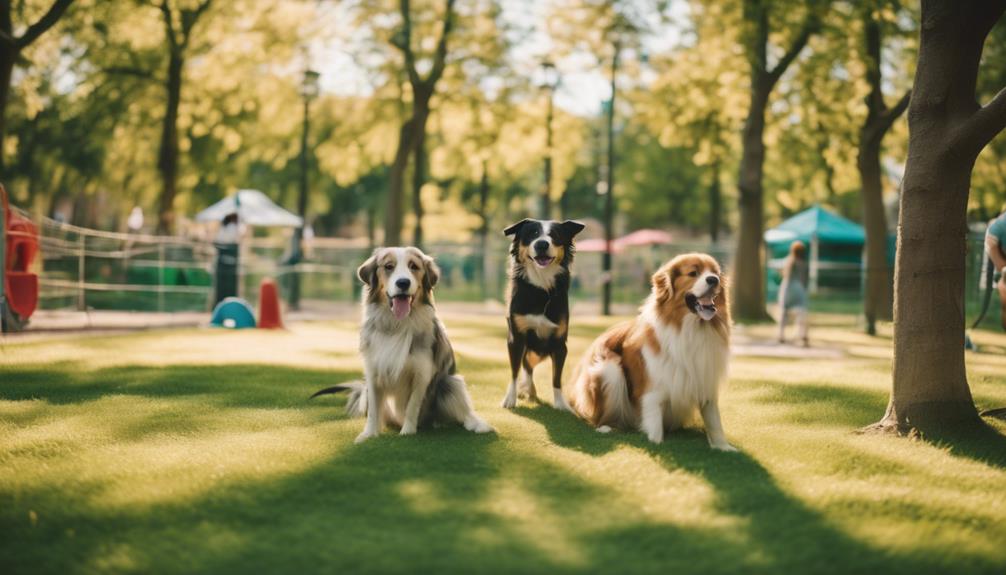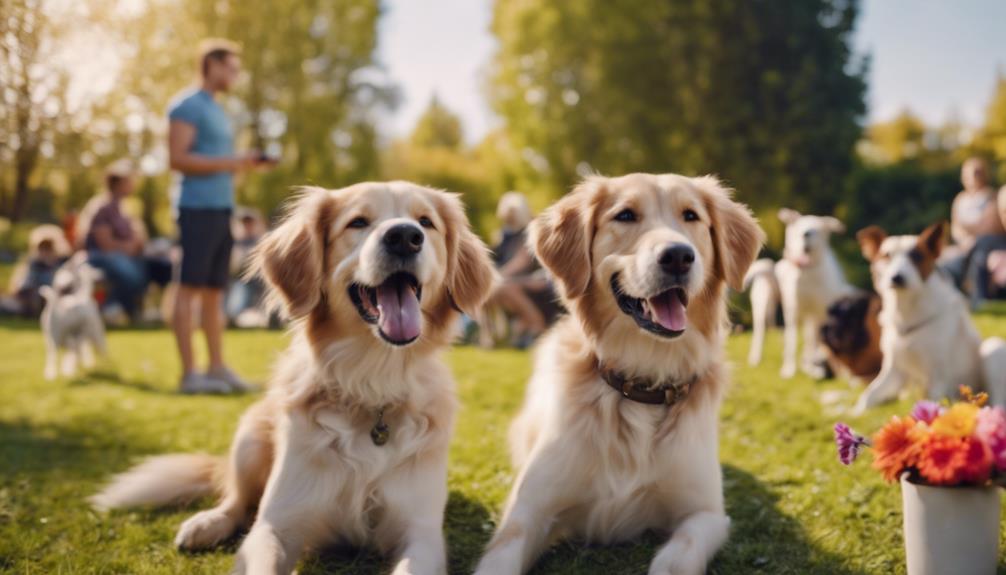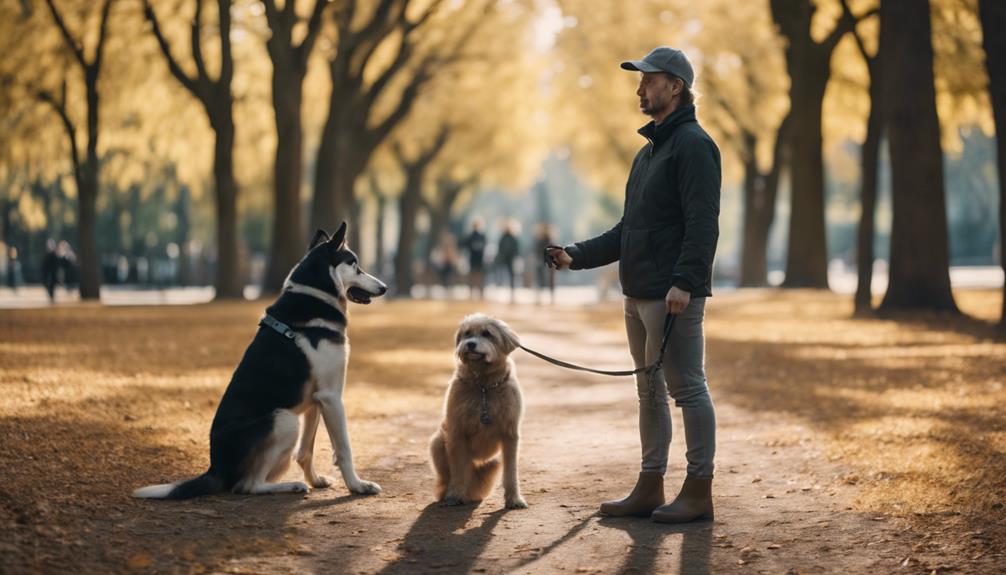Effective socialization is crucial for the overall wellbeing of your dog, shaping their behavior and interactions throughout their life. Early exposure to diverse environments, positive experiences, and other dogs can significantly mitigate anxiety and promote balanced behavior. Implementing structured methods such as puppy classes and gradual introductions can yield substantial benefits. However, understanding the nuances of canine body language and managing potential aggressive tendencies are equally important for successful outcomes. To ensure your dog thrives in social settings, it is essential to explore these strategies in detail.
Understanding Corgi Temperament

Understanding Corgi temperament is essential for effective socialization, as these intelligent and energetic dogs possess distinct personality traits that influence their interactions with both people and other animals.
Corgis are known for their playful nature and strong herding instincts, which can lead to unique corgi quirks, such as a tendency to chase moving objects. Additionally, their breed characteristics include loyalty and affection towards their families, making them eager companions.
However, they can also be independent and stubborn at times, requiring consistent training. When socializing Corgis, it is crucial to expose them to various environments and experiences early on, helping them develop confidence and adaptability.
This foundation will enhance their ability to interact positively with other dogs and people throughout their lives.
Early Socialization Importance
Early socialization is critical for dogs, as it lays the groundwork for their behavioral development and helps prevent potential issues in their interactions with other animals and people.
Engaging in puppy classes is one effective way to facilitate this process. These classes provide structured environments where young dogs can safely meet other dogs and people, promoting positive experiences.
The socialization benefits include reduced anxiety, improved confidence, and better communication skills. Early exposure to various sights, sounds, and experiences fosters adaptability and resilience in dogs.
It is essential for owners to prioritize socialization during the first few months of a puppy's life, as this period is crucial for shaping their future behavior and interactions.
A well-socialized dog is often happier and more well-adjusted.
Safe Playdate Environments

Creating safe playdate environments is vital for reinforcing the positive socialization experiences that puppies gain in structured settings like puppy classes. A well-organized playdate can significantly enhance your dog's social skills.
First, choose safe playgroups with dogs of similar size and temperament to ensure compatibility. Additionally, familiarize yourself with dog park etiquette, such as supervising interactions and recognizing signs of stress or aggression.
Clear boundaries should be established, including rules about toys and personal space. Always ensure the play area is secure, free from hazards, and well-fenced.
Gradual Introductions to New Dogs
A dog's successful socialization with new canine companions often hinges on the process of gradual introductions, which allows for a more comfortable and less stressful experience for both animals.
Begin by allowing the dogs to see each other from a distance, observing their body language. Gradually decrease this distance, ensuring that both dogs remain calm.
Incorporating playgroup dynamics, such as structured play sessions or supervised interactions, can enhance the experience.
Additionally, understanding dog park etiquette—such as avoiding overwhelming greetings and respecting personal space—fosters smoother introductions.
Always monitor interactions closely, intervening if necessary, to prevent any negative encounters.
This thoughtful approach to socialization lays the groundwork for positive relationships between dogs in various settings, including parks and playgroups.
Positive Reinforcement Techniques

Positive reinforcement techniques are essential tools for effectively socializing your dog.
By rewarding good behavior, you encourage your pet to repeat those actions, making training more enjoyable for both of you.
Consistent training sessions, along with the use of treats and praise, can significantly enhance your dog's learning experience and foster better social interactions.
Rewarding Good Behavior
Rewarding your dog for good behavior is an essential component of effective training that fosters a trusting and cooperative relationship between you and your pet.
Positive reinforcement techniques, such as clicker training, can significantly aid in behavior shaping.
Here are three key strategies to implement:
- Immediate Rewards: Offer treats or praise right after your dog exhibits good behavior to create a strong association.
- Consistency: Use the same cues and rewards for specific behaviors to help your dog understand expectations.
- Variety of Rewards: Mix up treats, toys, and verbal praise to keep your dog engaged and motivated.
Consistent Training Sessions
Consistent training sessions are crucial for reinforcing desired behaviors and establishing a clear learning environment for your dog. These sessions should be scheduled regularly to promote behavioral consistency.
Dogs thrive on routine, and having predictable training times helps them understand what is expected. Training routines can include basic commands, socialization exercises, and practice in various environments.
Remember to keep training sessions short and engaging, ideally lasting 10 to 15 minutes. This approach prevents boredom and maintains your dog's interest.
Additionally, always incorporate positive reinforcement techniques to encourage good behavior. By focusing on consistency, you can create a solid foundation for your dog's socialization skills, leading to a well-adjusted and confident companion.
Treats and Praise
Utilizing treats and praise effectively reinforces desired behaviors in dogs and fosters a strong bond between the pet and owner.
Positive reinforcement techniques are fundamental in socializing your dog. Here are three key points to consider:
- Treat Selection: Choose high-quality treats that your dog loves. The right treat can motivate them to perform desired behaviors during socialization.
- Praise Timing: Offer praise immediately after your dog exhibits the desired behavior. This helps them associate the behavior with positive feedback.
- Consistency: Use treats and praise consistently during training sessions to reinforce learning. Dogs thrive on routine and repetition, which solidifies their understanding.
Observing Body Language
Understanding your dog's body language is essential for effective socialization.
By reading canine signals, such as tail position and ear orientation, you can gain insights into their emotions and reactions.
Additionally, recognizing stress indicators, like lip licking or yawning, can help you create a more comfortable environment for your dog during social interactions.
Reading Canine Signals
Observing a dog's body language is essential for interpreting its emotions and intentions effectively. Understanding canine communication can significantly enhance your ability to socialize your dog.
Here are three key signals to observe:
- Tail Position: A wagging tail can indicate excitement, while a lowered tail may signal fear or submission.
- Ear Position: Erect ears often suggest alertness, whereas flattened ears might indicate discomfort or aggression.
- Facial Expressions: Relaxed facial muscles indicate calmness, while a tense face may show anxiety or aggression.
Recognizing Stress Indicators
Recognizing stress indicators in dogs is crucial for ensuring their comfort and well-being during social interactions. Dogs communicate their feelings through body language, and understanding these stress signals can help prevent anxiety triggers.
Common stress indicators include:
- Whining or barking excessively
- Tucking their tail between their legs
- Ears pinned back against their head
- Avoiding eye contact or turning their head away
When you observe these signs, it is essential to assess the situation and determine potential causes of stress. Changes in environment, unfamiliar dogs, or loud noises can contribute to anxiety.
Managing Aggressive Behaviors

Effectively managing aggressive behaviors in dogs requires a comprehensive approach that includes consistent training, socialization, and understanding of the underlying triggers. Recognizing aggression triggers is essential for successful behavior modification.
Here are three key strategies to consider:
- Identify Triggers: Observe your dog to determine specific situations or stimuli that provoke aggressive responses, such as unfamiliar people or other animals.
- Implement Training: Use positive reinforcement techniques to reward calm behavior, helping your dog learn alternative responses to triggers.
- Seek Professional Help: Consult a certified dog trainer or behaviorist who specializes in aggression to develop a tailored behavior modification plan.
Regular Socialization Activities
Engaging in regular socialization activities is crucial for fostering a well-adjusted and confident dog. One effective way to achieve this is by visiting dog parks, where your dog can interact with various breeds and learn social cues. These environments allow dogs to play, explore, and establish friendships, which promotes good behavior.
Additionally, enrolling your dog in group classes offers structured socialization experiences. These classes teach essential commands while exposing your dog to other pets and people in a controlled setting.
Ultimately, consistent participation in dog parks and group classes will ensure your dog develops the skills needed to navigate different social situations, leading to a happier, more balanced canine companion.

